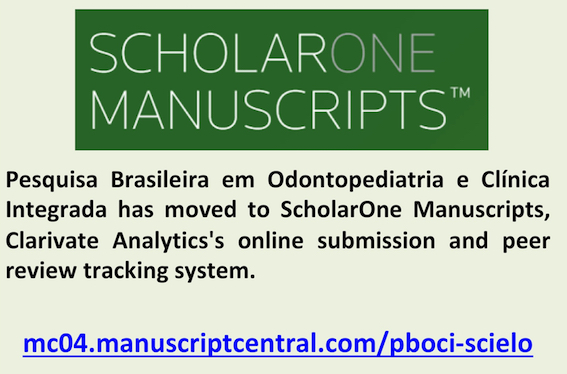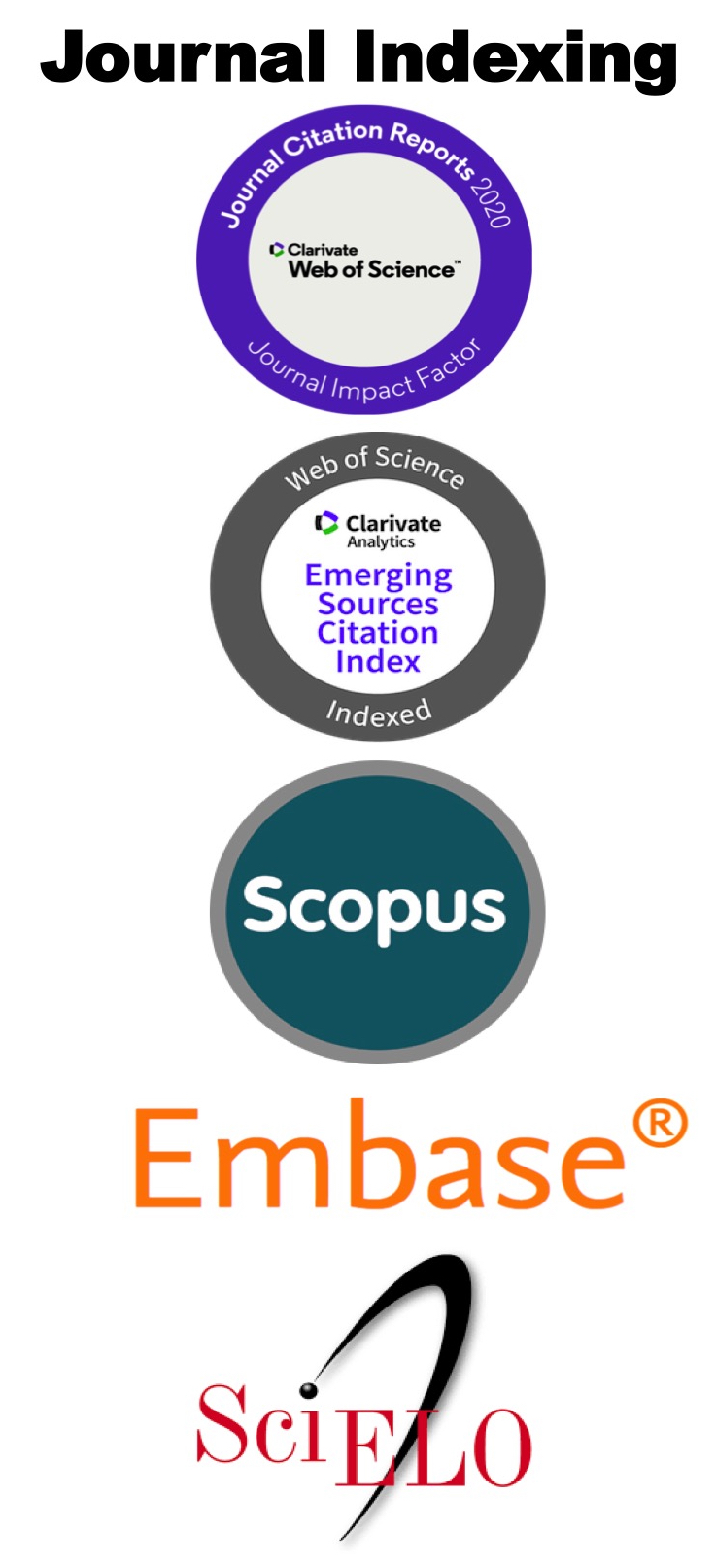Evaluation of Canalis Sinuosus on CBCT Images of Patients Candidate for Dental Implant Treatment in Iranian Population
Keywords:
Cone-Beam Computed Tomography, Dental Implants, MaxillaAbstract
Objective: To evaluate the frequency, diameter, location and path of canalis sinuosus (CS) on CBCT scans of patients candidate for dental implant treatment. Material and Methods: In this cross-sectional study, 200 CBCT images of the maxilla were evaluated and parameters were assessed: age, gender, the canal presence and diameter, the distance between the CS and the nasal cavity floor (NC), the buccal cortical bone (BC) and the most prominent point of the alveolar ridge crest (RC). Quantitative variables were analyzed with an independent t-test, and qualititative variables were analyzed with chi-squared and McNemer tests (p<0.05). Results: CS was detected on 100 CBCT images in the present study. There were significant relationships between the CS frequency and age and gender; however, there was no significant relationship between CS and the maxillary side. The means of BC, RC, NC and the canal diameter were 9.2±2.19, 15.15±3.13, 8.14±2.43, and 0.99±0.26 mm, respectively. There were significant relationships between the canal diameter, NC and BC with gender. However, there was no significant relationship between RC and gender. Conclusion: Canalis sinuosus was detected, with an approximate diameter of 1 mm, in 50% of the subjects in the incisor–canine area. The use of CBCT for accurate diagnosis of canalis sinuosus is suggested before surgical procedures in the palatal aspect of the anterior maxilla.References
Gurler G, Delilbasi C, Ogut EE, Aydin K, Sakul U. Evaluation of the morphology of the canalis sinuosus using cone-beam computed tomography in patients with maxillary impacted canines. Imaging Sci Dent 2017; 47(2):69-74. https://doi.org/10.5624/isd.2017.47.2.69
de Oliveira-Santos C, Rubira-Bullen IR, Monteiro SA, León JE, Jacobs R. Neurovascular anatomical variations in the anterior palate observed on CBCT images. Clin Oral Implants Res 2013; 24(9):1044-1048. https://doi.org/10.1111/j.1600-0501.2012.02497.x
Wanzeler AM, Marinho CG, Alves Junior SM, Manzi FR, Tuji FM. Anatomical study of the canalis sinuosus in 100 cone beam computed tomography examinations. Oral Maxillofac Surg 2015; 19(1):49-53. https://doi.org/10.1007/s10006-014-0450-9
Neves FS, Crusoé-Souza M, Franco LC, Caria PH, Bonfim-Almeida P, Crusoé-Rebello I. Canalis sinuosus: A rare anatomical variation. Surg Radiol Anat 2012; 34(6):563-566. https://doi.org/10.1007/s00276-011-0907-6
Arruda JA, Silva P, Silva L, Álvares P, Silva L, Zavanelli R, et al. Dental implant in the canalis sinuosus: A case report and review of the literature. Case Rep Dent 2017; 2017:4810123. https://doi.org/10.1155/2017/4810123
Torres MG, de Faro Valverde L, Vidal MT, Crusoé-Rebello IM. Branch of the canalis sinuosus: A rare anatomical variation -- A case report. Surg Radiol Anat 2015; 37(7):879-881. https://doi.org/10.1007/s00276-015-1432-9
McCrea SJJ. Aberrations causing neurovascular damage in the anterior maxilla during dental implant placement. Case Rep Dent 2017; 2017:5969643. https://doi.org/10.1155/2017/5969643
Volberg R, Mordanov O. Canalis sinuosus damage after immediate dental implant placement in the esthetic zone. Case Rep Dent 2019; 2019:3462794. https://doi.org/10.1155/2019/3462794
Jacobs R, Quirynen M, Bornstein MM. Neurovascular disturbances after implant surgery. Periodontol 2000 2014; 66(1):188-202. https://doi.org/10.1111/prd.12050
Ghandourah AO, Rashad A, Heiland M, Hamzi BM, Friedrich RE. Cone-beam tomographic analysis of canalis sinuosus accessory intraosseous canals in the maxilla. Ger Med Sci 2017; 15:Doc20. https://doi.org/10.3205/000261
Machado VC, Chrcanovic BR, Felippe MB, Manhães Júnior LR, de Carvalho PS. Assessment of accessory canals of the canalis sinuosus: A study of 1000 cone beam computed tomography examinations. Int J Oral Maxillofac Surg 2016; 45(12):1586-1591. https://doi.org/10.1016/j.ijom.2016.09.007
Tomrukçu DN, Köse TE. Assesment of accessory branches of canalis sinuosus on CBCT images. Med Oral Patol Oral Cir Bucal 2020; 25(1):e124-e130. https://doi.org/10.4317/medoral.23235
Manhães Júnior LR, Villaça-Carvalho MF, Moraes ME, Lopes SL, Silva MB, Junqueira JL. Location and classification of Canalis sinuosus for cone beam computed tomography: Avoiding misdiagnosis. Braz Oral Res 2016; 30(1):e49. https://doi.org/10.1590/1807-3107BOR-2016.vol30.0049
Ferlin R, Pagin BSC, Yaedú RYF. Evaluation of canalis sinuosus in individuals with cleft lip and palate: A cross-sectional study using cone beam computed tomography. Oral Maxillofac Surg 2021; 25(3):337-343. https://doi.org/10.1007/s10006-020-00919-7
Ferlin R, Pagin BSC, Yaedú RYF. Canalis sinuosus: A systematic review of the literature. Oral Surg Oral Med Oral Pathol Oral Radiol 2019; 127(6):545-551. https://doi.org/10.1016/j.oooo.2018.12.017
Orhan K, Gorurgoz C, Akyol M, Ozarslanturk S, Avsever H. An anatomical variant: Evaluation of accessory canals of the canalis sinuosus using cone beam computed tomography. Folia Morphol 2018; 77(3):551-557. https://doi.org/10.5603/FM.a2018.0003
Aoki R, Massuda M, Zenni LTV, Fernandes KS. Canalis sinuosus: Anatomical variation or structure? Surg Radiol Anat 2020; 42(1):69-74. https://doi.org/10.1007/s00276-019-02352-2
Lopes-Santos G, Salzedas LMP, Bernabé DG, Ikuta CRS, Miyahara GI, Tjioe KC. Assessment of the knowledge of canalis sinuosus amongst dentists and dental students: An online-based cross-sectional study. Eur J Dent Educ 2022; 26(3):488-498. https://doi.org/10.1111/eje.12725
Shelley A, Tinning J, Yates J, Horner K. Potential neurovascular damage as a result of dental implant placement in the anterior maxilla. Br Dent J 2019; 226(9):657-661. https://doi.org/10.1038/s41415-019-0260-4
Khalifa HM, Felemban OM. Nature and clinical significance of incidental findings in maxillofacial cone-beam computed tomography: a systematic review. Oral Radiol 2021; 37(4):547-559. https://doi.org/10.1007/s11282-020-00499-y
Anatoly A, Sedov Y, Gvozdikova E, Mordanov O, Kruchinina L, Avanesov K, et al. Radiological and morphometric features of canalis sinuosus in Russian population: Cone-beam computed tomography study. Int J Dent 2019; 2019:2453469. https://doi.org/10.1155/2019/2453469
Sekerci AE, Cantekin K, Aydinbelge M. Cone beam computed tomographic analysis of neurovascular anatomical variations other than the nasopalatine canal in the anterior maxilla in a pediatric population. Surg Radiol Anat 2015; 37(2):181-186. https://doi.org/10.1007/s00276-014-1303-9
von Arx T, Lozanoff S, Sendi P, Bornstein MM. Assessment of bone channels other than the nasopalatine canal in the anterior maxilla using limited cone beam computed tomography. Surg Radiol Anat 2013; 35(9):783-790. https://doi.org/10.1007/s00276-013-1110-8
Downloads
Published
How to Cite
Issue
Section
License
Copyright (c) 2024 Pesquisa Brasileira em Odontopediatria e Clínica Integrada

This work is licensed under a Creative Commons Attribution-NonCommercial 4.0 International License.



